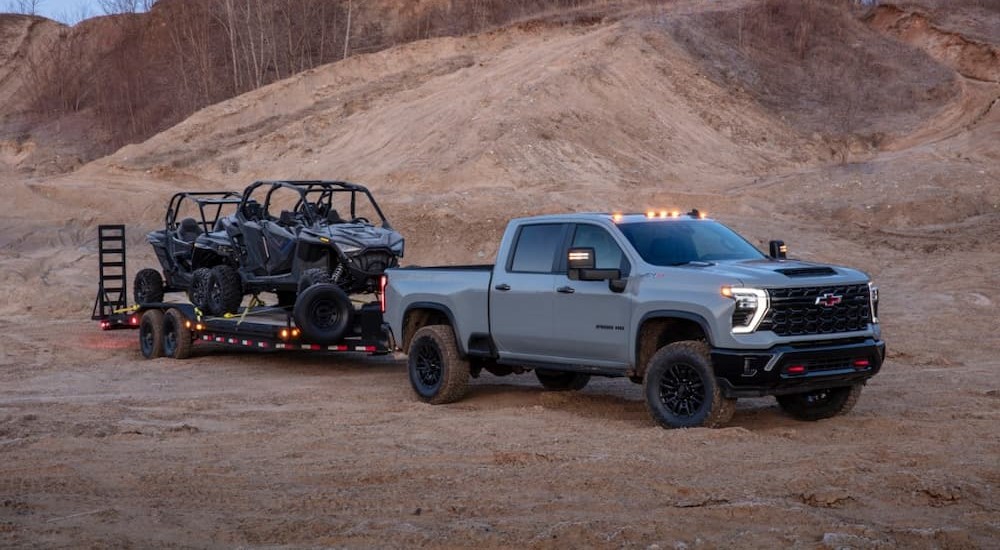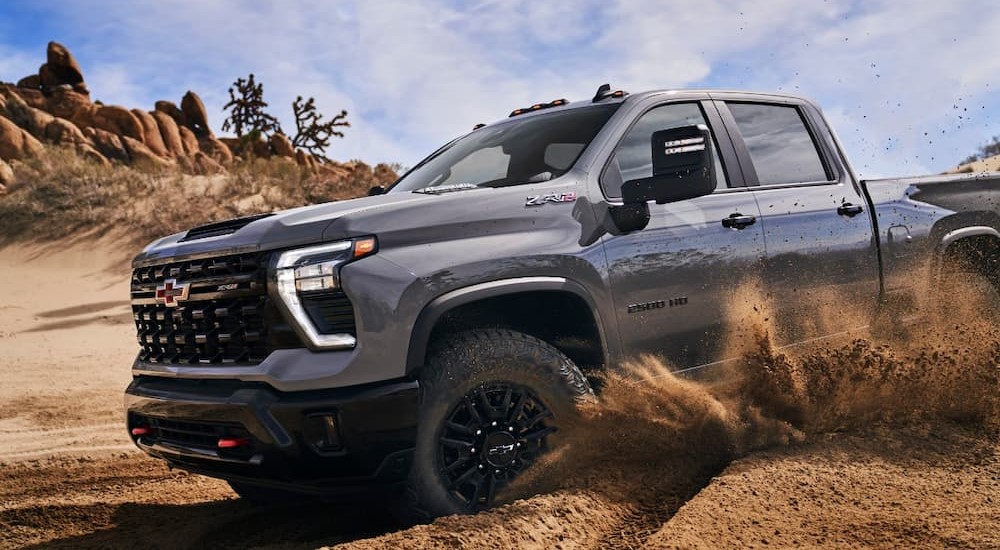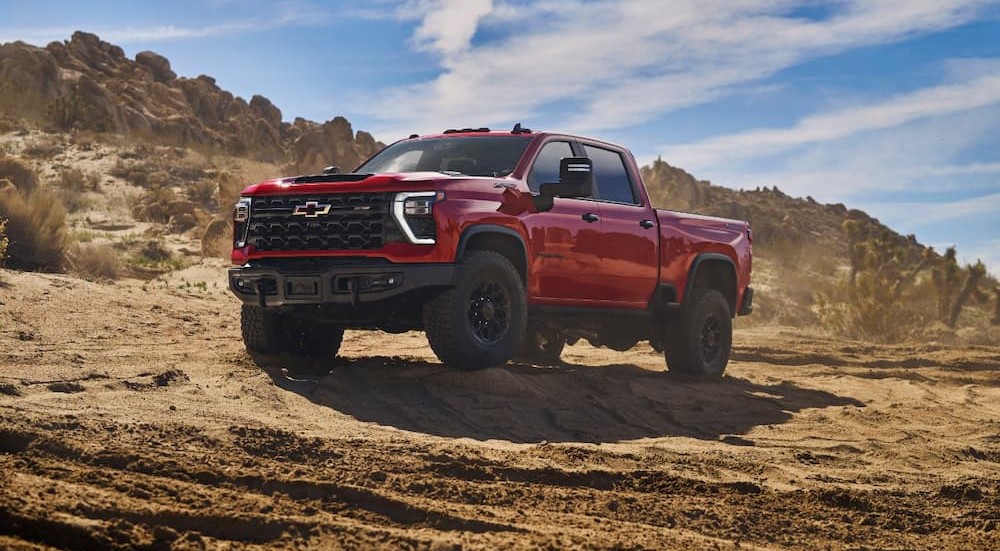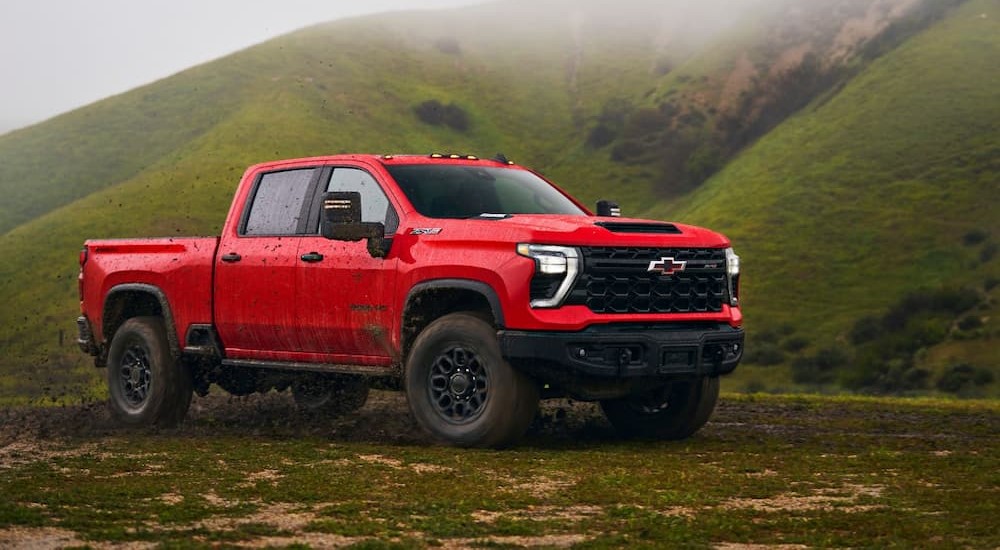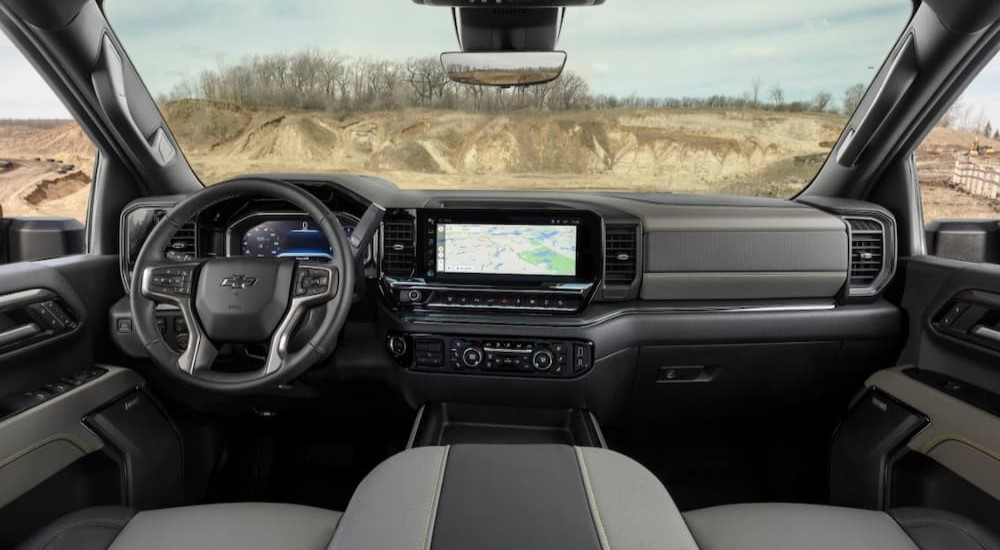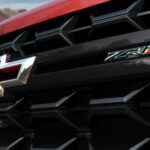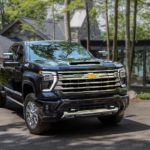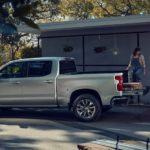If you’ve paid attention to the new and improved model releases these last few years, you’ll have caught on to a few trends. It suddenly seems as if 300 hp isn’t a whole lot of clout, going zero-to-sixty in 6.0 seconds isn’t that fast, CVTs aren’t actually continuous, more new vehicles than not are electric, and more trucks are being built for off-road than on.
The next time you spy an off-road variant of the Chevy Silverado for sale on some dealer’s lot, odds are it won’t be there upon your subsequent visit; people are eating these beasts up! Don’t believe me? Since 2020, we’ve been introduced to the Gladiator, Ranger Tremor, Bronco, Wrangler Rubicon 392, UNSC Warthog, Ram TRX, Hummer EV, Bronco Raptor, Rivian R1T, Wrangler 4Xe, F-150 Raptor R, AND the Silverado 1500 ZR2—just to name a few brand-new models and trims aimed directly at the off-roading segment. And these are just the NEW ones, not to mention the plethora of established overlanders that have continued to thrive.
In fact, another challenger has just entered the ring: the 2024 Chevy Silverado 2500 HD ZR2—a 33-character, 23-syllable name that takes longer to say than it does to fill with $150 of diesel—rounds out a heavy-duty off-roader segment that has hosted the Power Wagon and Super Duty Tremor for years. So what’s the deal with off-road-ready pickups?
Off-Roaders Are H.O.T.
Although the popularity of off-roading has been booming—800,000 people reported off-roading for the first time in 2019—there’s real truth to the “mall crawler” meme that plagues off-road capable vehicles, which are predominantly doomed to remain asphalt-locked forever. As little as 2% of SUVs drive over rocks or mud more than once a year; not even 10% see dirt or gravel! What drives people to buy specialized vehicles they aren’t going to use properly?
Likely the same reason someone may buy an AMG but never go to the track: because it’s more attractive! Big, brash, burly off-roaders are a degree of “sexy” that titillates those not wooed by the supercar’s slim and supple athletic sensuality, much like positioning Charles Bronson and John Wayne against Cary Grant and James Dean. Consider the case of the Chevy Colorado in 2022: the LT trim had a boring, normal grille with a bar across the middle, bowtie dead center, and smooth black bumper below; the Z71 had a black bowtie and unique, gray sculpted bumper; and the ZR2 had a gaping black maw of a grille, with CHEVROLET stamped across the top and bright red tow hooks protruding from the bumper like the lowered horns of a bull.
For most people, looks matter when it comes to their personal vehicle—otherwise, pickup trucks would have stumpy front ends like cargo vans, and nobody would slap a $50 spoiler on an Accord—and off-roaders are the toughest, baddest versions of whatever vehicle they’re based on. That’s a tale as old as time.
Changing Influence
There’s something else about the modern era that’s surely influencing off-roading culture. When I was young, you’d see the occasional muddy truck and maybe hear about a family member’s off-roading adventure with a Polaroid or two to go along with it, but otherwise—if it wasn’t already a part of your life—it was a hobby for “somebody else;” something that just didn’t apply to you, like real estate, parties, or French. These vehicles weren’t the stars of any auto show, they held no court during NASCAR or F1 events, and rarely was off-roading an emphasis for Pimp My Ride, Fast & Furious, or Monster Garage (Doom Buggy excepted).
Today, however, people are literally making a living out of “influencing,” creating photographic, video, and written content out of every little thing they ever do. Anybody who’s ever seen mud and MT tires can, at the same time, share filtered selfies, post shaky videos, and stage wilderness photos with captions worthy of a Progressive Insurance “becoming your parents” commercial, then immediately put it in the faces of thousands of followers. The Season 2 finale of HiLow—in which the Donut Media crew modded out two basic Tacomas into off-roading beasts and put them to the test on iconic Colorado trails—has 5.5 million views, giving hundreds of thousands of people their first real good look at the off-roading hobby.
It’s so idyllic! Beautiful nature; a friendly, cooperative community; an exciting adventure with family or friends! They showed that it could all be yours with just a little more off-roading capability than comes standard in a road-duty vehicle, that you needn’t spend a hundred grand to get there—and that romantic outlook is coming from just one media outlet, among thousands of influencers across a dozen-plus social media platforms!
So now the masses have easy access to see the highlights of this attractive “lifestyle” hobby; cue the demand for more off-roaders, as people are inspired to give it a try and equip themselves to do so. Whether or not they actually do doesn’t matter—it isn’t about that at all! Owning a Ferrari isn’t about ripping 200 mph around a track, and owning a Raptor has nothing to do with Baja basin sprints.
Ameri-Can-Do Attitude
It’s about flipping the script from “I would if I could” to “I could if I would.” The same goes for our collective fascination with pickup trucks; by far, the most popular vehicles in the country are the F-150, Silverado, and Ram, though only 1 in 4 are used for towing, and more than half never fill their beds. In addition to the glamorous hue cast on off-roading by social media, our ever-expanding DIY culture—driven in parts by good ol’ American independence, the self-improvement angle of the influencer industry, and a very real sense among many people that they’d best be ready because all the crap’s gonna hit all the fans all at once and soon—makes a vehicle that can do anything extremely attractive.
I’ve fallen victim to this myself. A couple of years ago, I bought my first house—one with a lot of property and a long, gravel driveway. When our 250,000-mile sedan received a terminal diagnosis, we got an F-150—because we would put a plow on it to handle the driveway ourselves, we would be doing lots of landscaping and woodworking, and maybe (just maybe) we would get kayaks and go for adventures.
I think I forgot—for about six months—that I was practically born with a negative net worth and that all these things ran counter to changing that situation. I traded that rusted-out gas guzzler barely two years later for a CR-V that makes twice the mileage and can still handle the variety of projects that are actually within our limits, which we take on about twice a year. All of that serves to say I understand the allure of the independence supplied by an off-road vehicle, no matter the likelihood of it actually proving valuable.
But a Heavy-Duty Truck? Really?!
The Silverado 2500 HD ZR2 is an interesting case. I’ll admit, my instinctive reaction is to scoff at yet another money-grabbing off-roader that nobody will use. But I caught myself at that last part. I know that millions of Americans are driving around in pickup trucks for no good practical reason, but my perception of the bigger, more work-focused HD lineups is different. I’m not sure if anybody’s out there driving a heavy-duty pickup that they don’t use.
That’s because the difference between the 1500 and 2500 is all practical. The cost is the same, the efficiency is worse, and the general features are worse for roughly the same aesthetic and daily capability. The leap from Equinox to Silverado 1500 is a total revolution in perception, whereas the Silverado 2500 HD merely stretches the style a little further. It’s an exercise in diminishing returns, is my point, and it seems—for most drivers—that there really is an upper limit to how big is big enough.
If the majority of HD truck owners use them for “truck” things—towing, hauling, plowing—doesn’t it stand to reason that said trucks might often find themselves off beaten paths? One report claims that 74% of “off-highway vehicles” (otherwise known as off-road vehicles, but inclusive to ATVs, UTVs, and the like) are used during hunting or fishing—activities where using a truck makes a lot of sense. For HD truck owners who are serious DIYers, campers, and hunters especially, off-road trims make a heck of a lot of sense, even if it’s just for making that last 10% of the journey more confident or comfortable, whether it’s on a worksite, a campground, or deep in the genuine wilderness!
The ZR2 makes even more sense when one considers that the modern Power Wagon has been around since 2005 and the Super Duty Tremor package since 2020; the ZR2 is the last to the party! The market is clearly there; although only 5% of Ram 2500s are Power Wagons, they’re the fastest off the lots. It’s shocking that it took Chevy so long to produce even a pseudo-competitor to the Raptor and Power Wagon because people who are seeking capability from their vehicle aren’t hesitating to spend an extra $5k or so on middle-trim trucks in order to have it.
Where We Go From Here
Will the Silverado 2500 HD ZR2 prompt Ram to slam the hammer down with a HyperPower Wagon or Ford to create a SuperRaptor? (Ram, I think not, but Ford… yeah, give it two more years, and we’ll hear something about the Super Duty Raptor variant.) The fact is, off-roaders sell; the introductions of both generations of the Raptor, the 2015 Ram 1500 Rebel, and the 2017 Colorado ZR2 all coincided with sales increases of 13% in the two years after release for the respective models. Whether that’s correlation or causation is hard to tell, but, for Chevy, this HD ZR2 seems like a no-brainer; Ford escalating yet again in the next couple of years might be an easy decision as well.
Either way, it seems the off-road industry is only getting more crowded and competitive. Exciting new capabilities and nostalgic revivals generate plenty of hype on their own, but they don’t really need it. The instantly-accessible glamor of off-roading lifestyles will continue to influence the masses to at least make themselves capable of going “out there,” and the continued proliferation of a sense that one must be capable of total independence to have “made it” means millions more people will buy these kinds of vehicles than will actually need them.
But when it comes to heavy-duty pickups, I think it makes a lot of sense—more sense in most cases than luxury trims! At the very least, I’m confident that every Silverado 2500 HD ZR2 will get more than just a little bit of mud on the tires.
